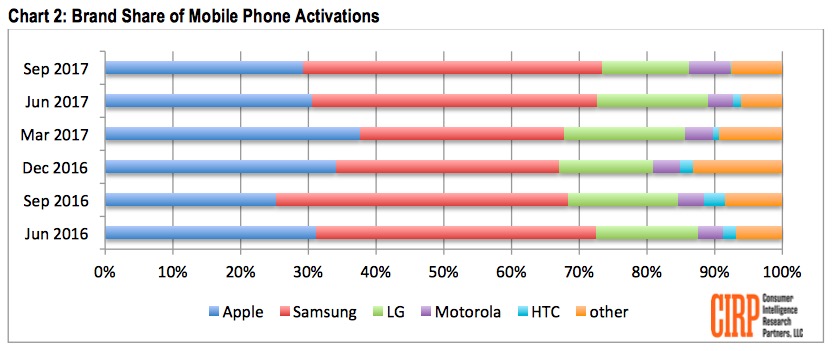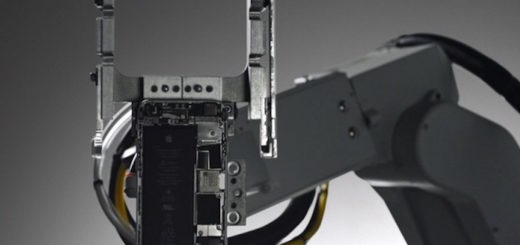Apple’s iOS Share is Growing, Even Before iPhone X

The latest Consumer Intelligence Research (CIRP) data confirms the iOS/Android duopoly in smartphone use in the U.S.A., but doesn’t really account for Apple’s recently-introduce iPhone 8 or its soon-to-ship iPhone X.
Apple is big, Android is bigger, Windows are closed
The data covers July-September 2017, though Apple’s new 8 device was only available across two weeks in that period.
Android and iOS, accounted for virtually 100 percent of U.S. mobile phone activations in the third quarter.
Android took 71 percent of activations (the same as last year and up from 68 percent in June), while iOS took 29 percent of activations, up from its 25 percent share in the year-ago September 2016 quarter, and down from its 31 percent share in the June 2017 quarter.
Josh Lowitz, Partner and Co-Founder of CIRP said:
“This past September quarter resembles the year-ago quarter. iOS improved a bit relative to its year-ago share, at the expense of Windows and basic phones, which statistically now have zero share in the US.”
But people still buy Samsung
Among phone brands, Samsung had the highest share in the US market in the September 2017 quarter, at 44%, with Apple next at 29% and LG at 13%. All other brands, including Motorola, HTC, and others, accounted for the remaining 14%.
“Phone brand shares remained relatively stable compared to last year,” said Mike Levin, Partner and Co-Founder of CIRP.
“Samsung continues to sell the most phones, as it has for the last couple of quarters. Apple increased share somewhat relative to last year, while LG fell a bit. This leaves 10-15% of the market to a range of other brands.”
“The new iPhone 8 and 8 Plus models were available only for a couple of weeks in the quarter, so the data is still coming in,” continued Lowitz.
“Still, it’s not quite enough to outweigh the clear impact of Apple customers holding back on purchasing for the first ten weeks of the quarter, as they waited for new phone models.”
Save your money, or save the planet?
That Samsung is the world’s number one smartphone manufacturer is not in doubt.
What is in doubt is just how much damage that company’s lack of commitment to green electronics is doing to the planet.
In its latest analysis of Samsung, Greenpeace writes:
“Samsung currently occupies a critical position of influence over whether our devices are designed and built for the planet. Samsung is both the world’s largest manufacturer of smartphones and is also one of the largest manufacturers of memory, displays, and the integrated circuits that serve as the engines for our electronic devices, making the company a critical supplier to many of the other companies in this year’s Guide, including Apple. Unfortunately, in neither Samsung’s product lines nor the operation of its factories did we find much evidence that reducing Samsung’s environmental impact has been made a priority by the company’s leadership. Samsung has not kept pace with the efforts of Apple to reduce its greenhouse gas footprint and transition its factories to renewable sources of energy, and has seen its emissions rapidly climb as a result.”
Consumers in the market for a smartphone may want to consider that stinging indictment with what Greenpeace has to say about Apple:
“Apple’s leadership in reducing the impact of it supply chain on the planet is helping redefine expectations of corporate responsibility, playing a catalytic role in driving better performance by other companies.”
One more thing
What’s interesting here is that in the run-up to Apple’s new smartphone announcements we saw a real slow-down in sales: Apple has recovered momentum with its new devices, and it will be interesting to see how much more it builds on the release of iPhone X.
Now, we think that device will be in short supply, but those who do end up with an iPhone 8 really won’t be disappointed. It is also rather interesting that iPhone 8 Plus sales outweigh those of the smaller model.




